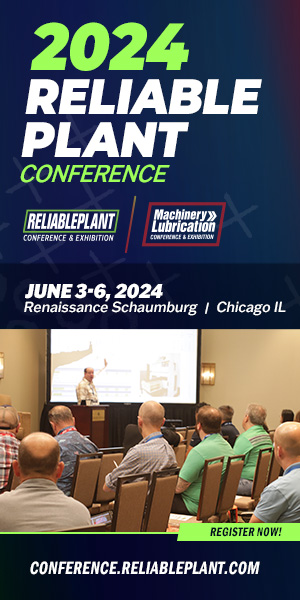quote:
Originally posted by Houckster:
I have received the results of the testing by Staveley Fluids Analysis performed for SynLube.
In general, everything tested normal except for copper and silicon which had readings of 44 and 40 respectively. The report indicates that this is probably associated with normal engine break-in. As of this time, my engine seems to run just fine and my current 4-tank MPG average is 20.4 which is high for a 4.0L V-6 Ranger that's primarily driven in city/suburban light traffic conditions.
The oil has 15.3K on it. During this time only 4 oz. of oil was consumed and it was replaced by 4 oz. of Service Fill.
Here are the other readings:
iron: 79
chromium: 3
lead: 1
tin: 0
aluminum: 3
nickel: 5
silver: 0
boron: 18
sodium: 5
magnesium: 285
calcium: 2838
barium: 0
phosphorus: 712
zinc: 836
molybdenum: 539
titanium: 0
vanadium: 0
potassium: 0
fuel: <1 %/vol
viscosity @ 40 C: 117.5
viscosity @ 100 C: 15.77
water: 0%/vol
soot/solids: 0.3
glycol: negative
TBN: 3.7
VI: 142
Ok here is my problem: from the synlube site your oil was not within their own specs. link
http://www.synlube.com/serv02.htm and below
you compare.
About Oil Tests
We at SynLube, Inc. receive many e-mails with questions about oil tests performed by various laboratories, and how to interpret them. This section should answer most of frequently asked questions, and help to understand the differences between conventional oils (both petroleum and synthetic) and our unique colloidal lubricants.
Specifics:
Iron = Fe
Conventional Petroleum or Synthetic oils will NOT show ANY Iron in FRESH OIL
SynLube™ however due to unique chemical formulation has typically 50 PPM in the INITIAL FILL OIL and about 75 PPM in the ADD OIL of Iron, because some of the ""sacrificial"" antioxidants contain Fe atoms in their chemical molecular make up.
Normally laboratories "Flag" Fe if PPM is greater than 100, although levels below 1,000 rarely translate into any mechanical problems or abnormal wear even in a Conventional Oil.
For practical purposes about 100 should be subtracted from the Lab report to project any "wear" and that is only simple rule.
Labs also usually test oils that are Frequently Changed, therefore oil that remain in the engine for over 10,000 miles will have much higher reading than oil that is changed every 3,000 miles.
The ONLY reliable indication of Relative wear is installation of TriMagnets onto the motor oil filter and replacing the oil filter at regular intervals (2 years or 25,000 miles). Cutting the filter apart with appropriate tool and inspecting visually the quantity and quality of the iron deposits that were trapped by the TriMagnet is much more reliable indication of wear since 80 to 90% engine wear is Ferro-magnetic.
Other less reliable method is taking the Fe reading from lab report, subtracting 100 PPM and dividing that by the miles on the oil.
Example: 114-100 = 14/12,000 = 0.00116
If the Fe value is LESS than 0.01 there is NO NEED for concern about the Iron reading.
Chromium = Cr
This is the ONLY wear element that is of concern in oil analysis of SynLube™, as NO Chromium is present in FRESH SynLube™ Lubricants.
Again Cr level in relation to miles on the oil is of importance and NOT the actual level, frequently
Some Chromium will be in the oil from the initial break in, and the level will remain constant over many thousands of miles or actually DROP with time and miles.
The Cr reading must be compensated for accumulated mileage.
Example: 11/12,000 = 0.0009
If the value is LESS than 0.005 there is NO NEED for concern about the Chromium reading.
Silicon = Si
Many OEM’s use Silicone Lubricant spray on engine components to prevent rust and to serve as initial break-in lube during engine assembly.
Readings of OVER 1,000 PPM are NOT uncommon on NEW engines, and as always some Silicone will remain even after several oil changes.
Silicone is usually interpreted by labs as Dirt, Dust or Sand if it is associated with "solids" in the oil test, however since SynLube™ has up to 33% by volume of colloidal solids, this rule can not be applied to SynLube™.
However SynLube™ uses silicone based anti-foam agents in most of the Lube-4-Life™ fluids, therefore silicone levels in 200 to 250 PPM are NORMAL for the formulations and can be as high as 500 PPM for ATF or PSF.
Tin = Sn
Chemicals that contain Tin Sn are component part of the INITIAL FILL OIL and readings of 55 to 67 PPM are NORMAL, the Tin level will actually decrease with the use of ADD OIL, and when it drops BELOW 25 PPM it indicates that either INITIAL FILL OIL or SERVICE FILL OIL should be used during NEXT OIL FILTER CHANGE, instead of the ADD OIL.
Molybdenum
SynLube™ oils contain Moly and therefore the Molybdenum levels will be in 3,000 PPM and above range, when level drops to below 1,000 PPM, INITIAL FILL OIL should be added instead of the ADD OIL, next time oil addition is needed.
Differing test equipment yields different Molybdenum levels from identical test sample, therefore data obtained from different laboratories can not be reliably compared.

